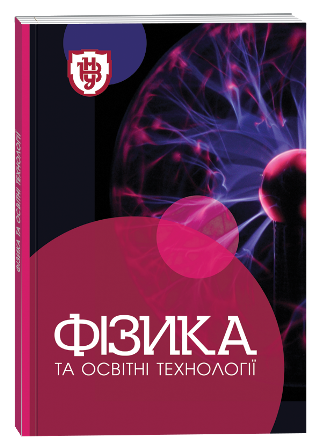ОПТИЧНЕ ПОГЛИНАННЯ СТЕКОЛ СИСТЕМИ Ga2S3-GeS2-Sb2S3 ЛЕГОВАНИХ Er ТА Nd
DOI:
https://doi.org/10.32782/pet-2025-1-16Ключові слова:
оптичне поглинання, склоподібні сплави, халькогенідний напівпровідник, ширина забороненої зони, ербій, неодимійАнотація
Оптичне поглинання в халькогенідних напівпровідниках є важливим як з фундаментальної, так і з прикладної точок зору. Аналіз спектрів оптичного поглинання в халькогенідних склоподібних сплавах допомагає розкрити електронну структуру та природу хімічних зав’язків у цих матеріалах та сприяє глибшому розумінню фізики невпорядкованих систем. Дослідження оптичних властивостей халькогенідних стекол сприяє розробці нових матеріалів з покращеними характеристиками, а також допомагає виявити наявність дефектів і домішок, які можуть впливати на їх оптичні та фотоелектричні властивості.Досліджено спектри оптичного поглинання стекол 20 моль. % Ga2S3 – 60 моль. % GeS2 – 20 моль. % Sb2S3 та 25 моль. % Ga2S3 – 30 моль. % GeS2 – 45 моль. % Sb2S3 одночасно легованих Er та Nd в діапазоні 550 – 2000 нм при кімнатній температурі. Край оптичного поглинання стекол знаходиться близько 600 нм і не зазнає суттєвих змін при їх легуванні Er та Nd. Зареєстровано вузькі смуги поглинання з максимумами 655, 755, 810, 885, 980 і 1540 нм, що відповідають переходам в f-оболонці іонів Er3+ і Nd3+.З графіка, що визначає край оптичного поглинання, екстраполяцією лінійної ділянки експериментальної кривої до перетину з віссю абсцис оцінено оптичну ширину забороненої зони стекол. Встановлено, що при збільшенні вмісту Sb2S3 (20 – 45 моль. %) відбувається зміщення краю оптичного поглинання в сторону більших довжин хвиль, що призводить до зменшення ширини забороненої зони досліджених склоподібних сплавів. Додавання (1 –3) моль. % Er2S3 не призводить до значних змін Eg та при подальшому збільшенні цієї компоненти зафіксовано деяке зростання (~ 0,04 еВ ) енергії забороненої зони.Низькі значення коефіцієнта поглинання в діапазоні 1000 – 2000 нм свідчать про хороші перспективи використання досліджених стекол в оптоелектронній техніці, що працює близькому інфрачервоному діапазоні.
Посилання
Eggleton B. J., Luther-Davies B., Richardson K. Chalcogenide photonics. Nature Photonics 2011. Vol. 5, 141–148.
Heo J., Chung W.J., Adam J.-C., Zhang X. Rare-earth-doped chalcogenide glass for lasers and amplifiers. Chalcogenide Glasses. Preparation, Properties and Applications. Cambridge, UK : Woodhead Publishing Limited 2014, p. 347–378.
Chen P. Ailavajhala M., Mitkova M. et al. Structural Study of Ag-Ge-S Solid Electrolyte Glass System for Resistive Radiation Sensing. IEEE. Microelectronics and Electron Devices 2011. 1–4.
Кевшин А.Г., Галян В.В., Давидюк Х.Є., Парасюк О.В., Мазурець І.І. Концентраційна залежність оптичних властивостей склоподібних сплавів у системі HgS–Ga2S3–GeS2. Фізика та хімія скла. 2010, № 36, с. 27–32.
Галян В. В., Кевшин А. Г., Іващенко І. А., Шевчук М. В. Вплив заміни S на Se на спектри оптичного поглинання склоподібних сплавів Ag1,6Ga1,6Ge31,2S61,6-xSex. Фізика і хімія твердого тіла. 2016. Т. 17. № 3. c. 342–346.
Mott N.F. Davis E.A. Electronic Processes in Non‐Crystalline Materials. Oxford: Clarendon‐Press. 1971. p.437.
Студеняк І.П., Сусліков Л.М. Оптичні властивості кристалічних та некристалічних матеріалів. навчальний посібник. Ужгород: Видавництво УжНУ “Говерла”. 2021. 272 с.
Lozano W., Ara C. B., Ledemi Y., Messaddeq Y. Upconversion luminescence in Er3+ doped Ga10Ge25S65 glass and glass-ceramic excited in the near-infrared. J. Appl. Phys. 2013. Vol.113. p. 083520-1–083520-6.
Halyan V. V., Strelchuk V. V., Yukhymchuk V. O. Role of structural ordering on optical properties of the glasses Ag0,05Ga0,05Ge0,95S2–Er2S3. Physica B Condens. Matter. 2013. Vol. 411. № 15. p. 35–39.
Shen X., Nie Q., Xu T., Dai Sh., Wang X. Temperature dependence of upconversion luminescence in erbium-doped tellurite glasses. J. Lumin. 2010.Vol. 130. p.1353–1356.
Pan Q., Yang D., Dong G., Qiu J., Yang Z. Nanocrystal-in-glass composite (NGC): A powerful pathway from nanocrystals to advanced optical materials. Prog. Mater. Sci. 2022. Vol. 130. p. 100998.








